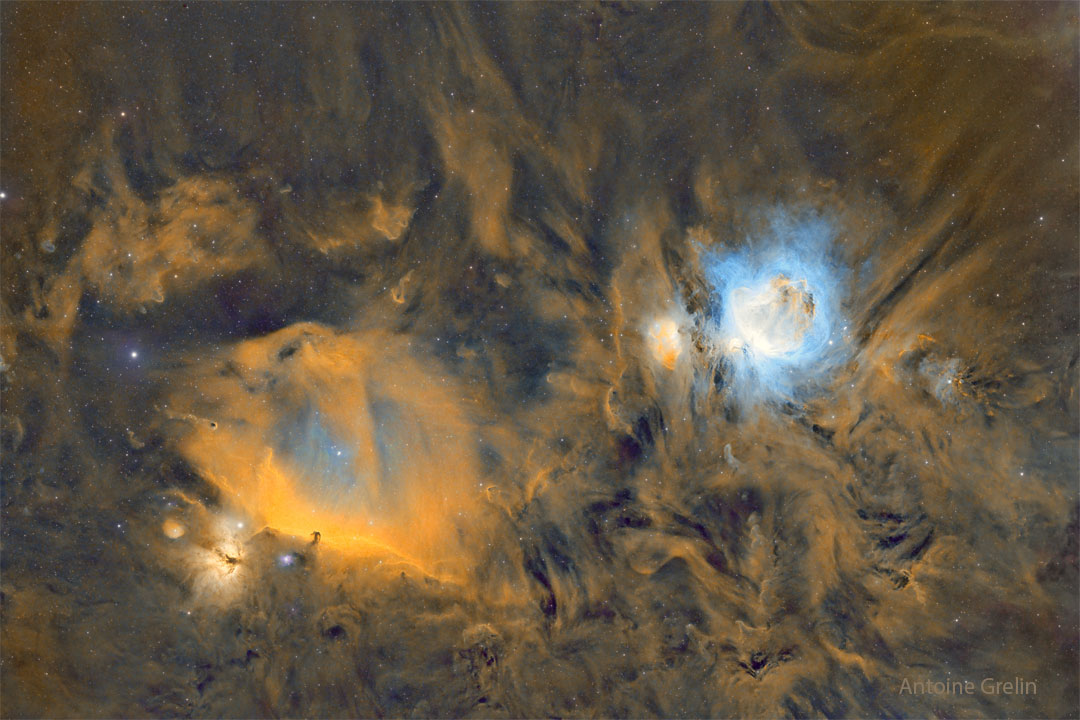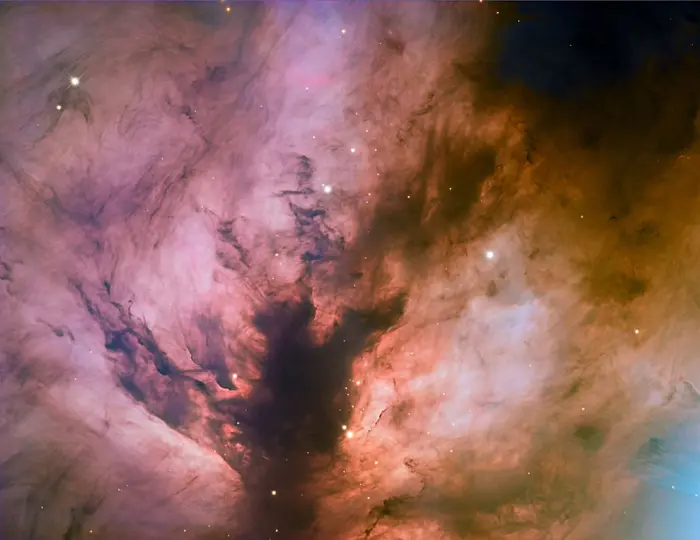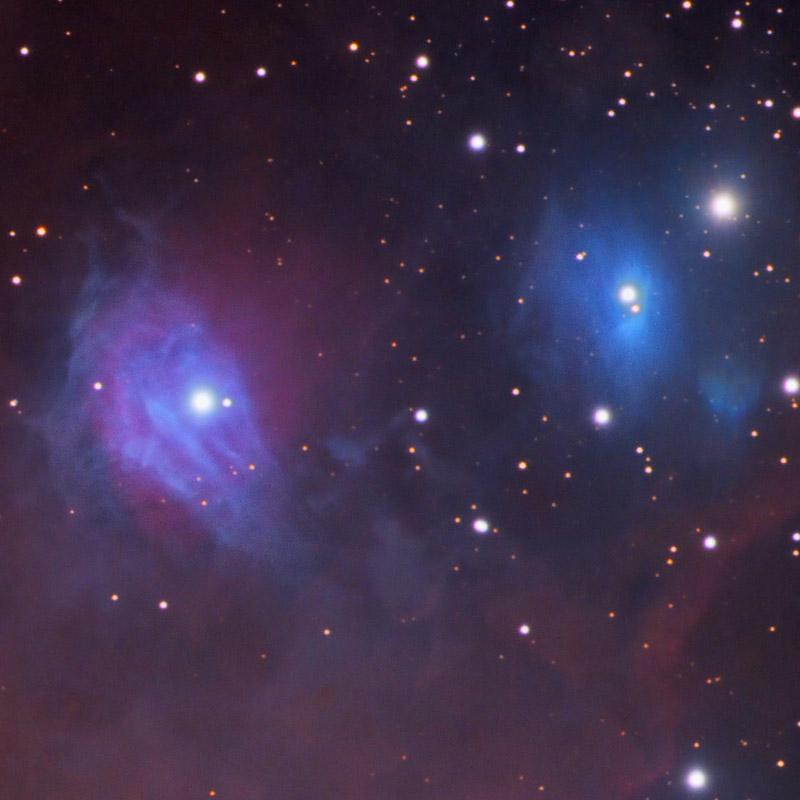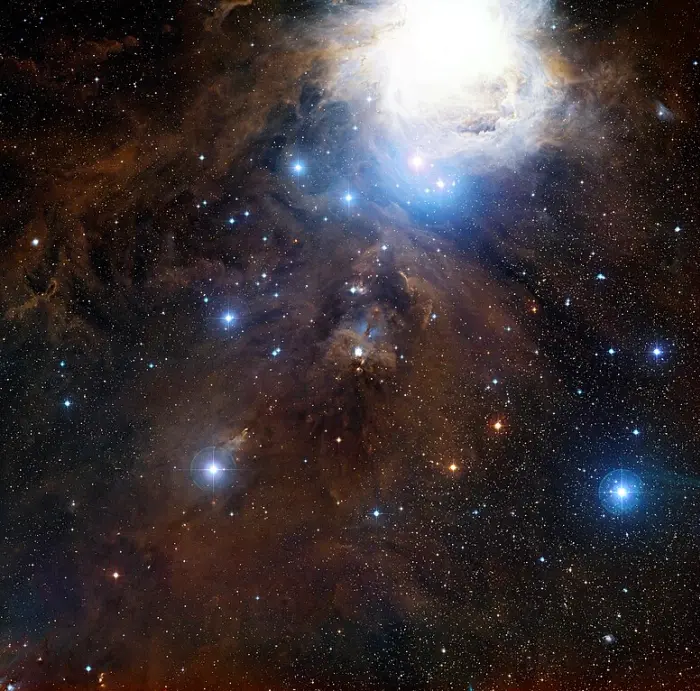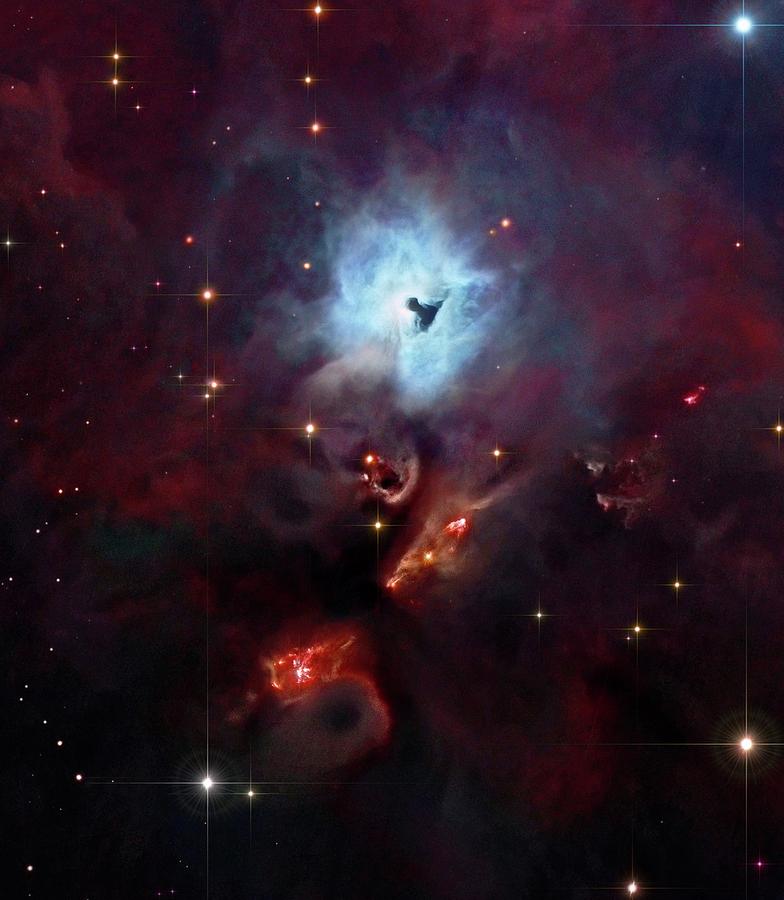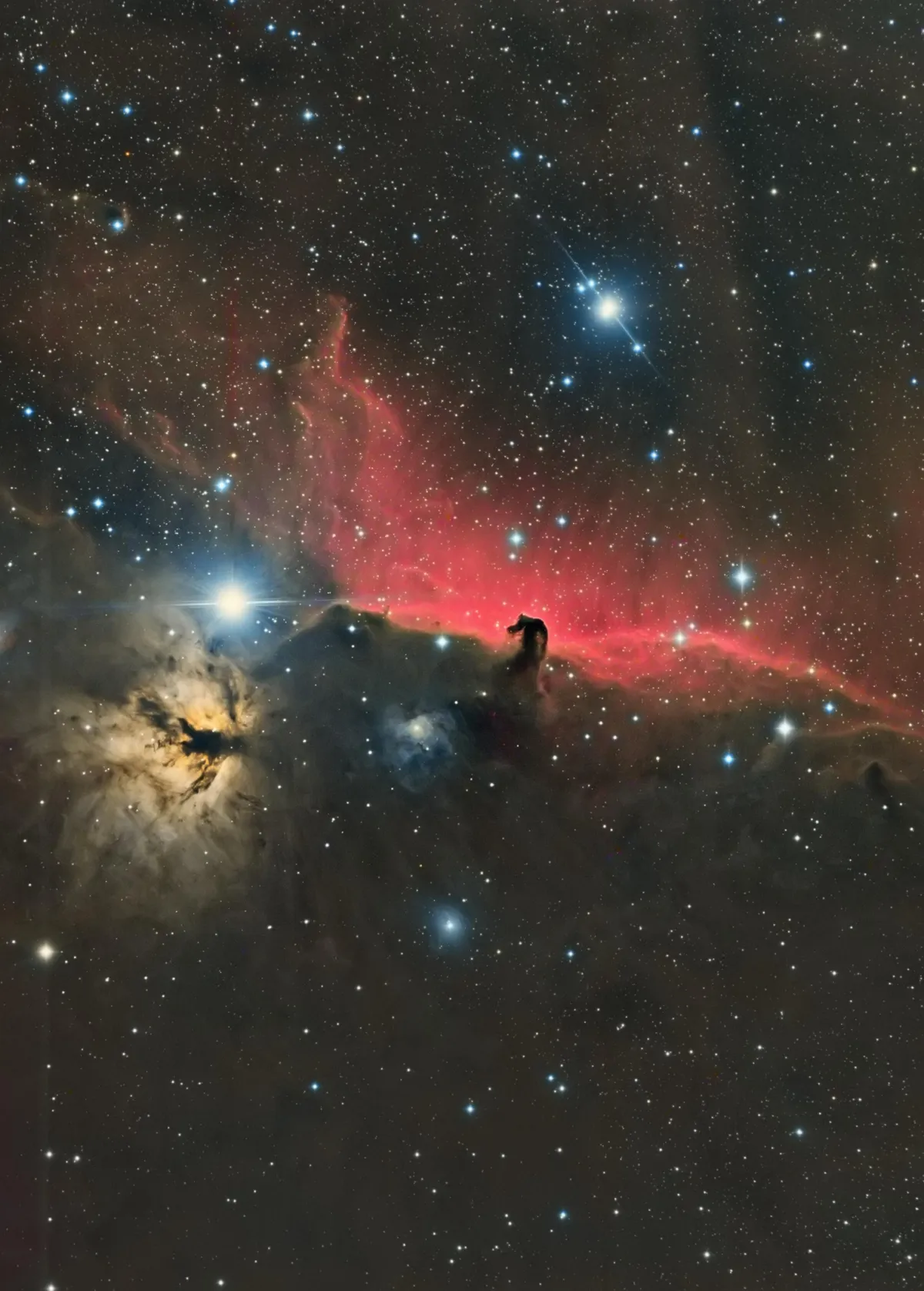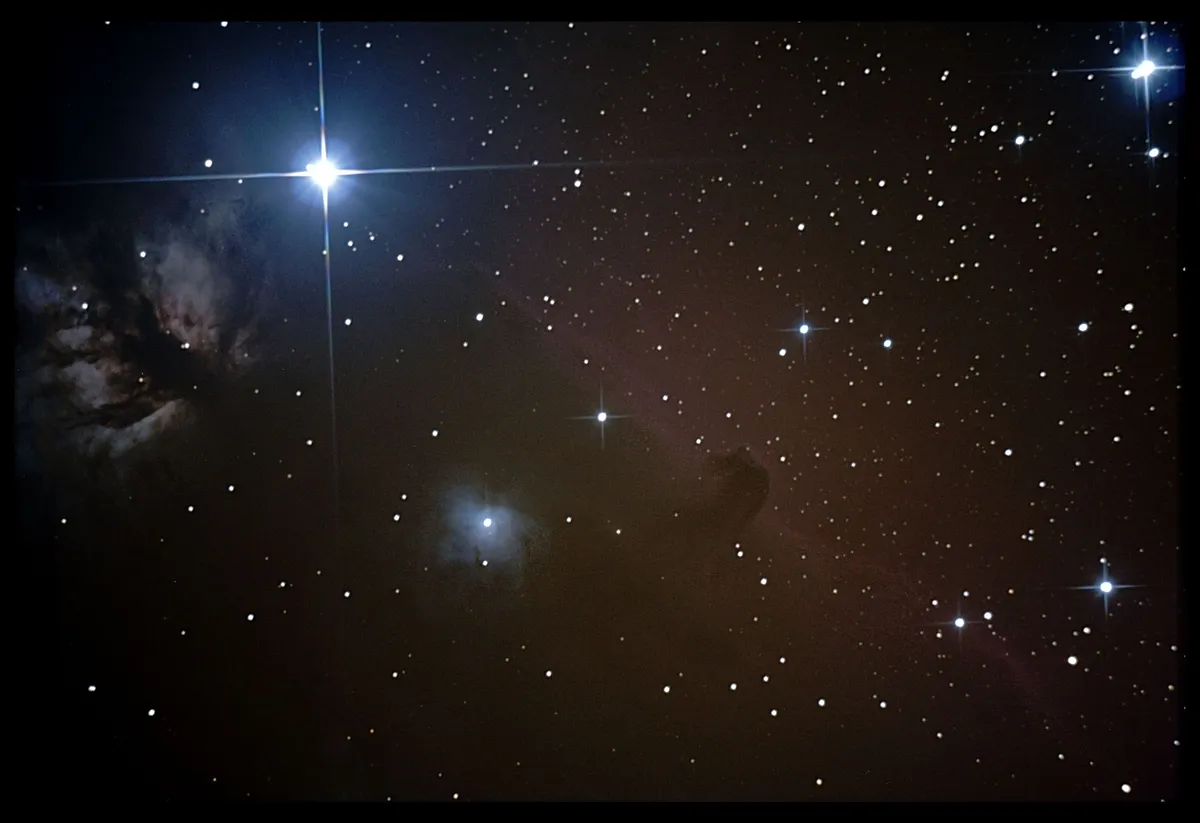Christian G. wrote: ↑Tue Sep 10, 2024 12:07 pm
Ann wrote: ↑Tue Sep 10, 2024 6:19 am
What I specifically like about the APOD is all the "pillars" pointing at Sigma Orionis. Sigma Orionis is a hot O-type star, which, because of its harsh stellar wind and intense ultraviolet light, has cleared a "bubble" around itself. But at the margins of this bubble, "pillars" of gas and dust remain standing, pointing at Sigma Orionis. The Horsehead Nebula is just one of those pillars.
Why does it seem that, unlike Sigma Orionis with the Horsehead Nebula, the equally hot Alnitak isn't really "carving" anything in the Flame Nebula? The dark dust pillars or lanes in its center aren't pointing in any way towards it, or am I misinterpreting what I'm seeing?
Good question. Indeed, a very good question. It took me a long time to accept that Alnitak had anything to do with the Flame Nebula, because I couldn't see any visual signs that the Flame Nebula was being affected by the hot bright star in any way.
As you can see in Hypatia Alexandria's image, there are no obvious "pillars" at all that are pointing at Alnitak. Also note that the color of the Flame Nebula is different than the color of red nebula behind the Horsehead Nebula. The color difference is not so great in Hypatia Alexandria's image, but in other images, the color difference is striking. Because of that, I used to think that the Flame Nebula was not being ionized from outside at all, and that all the light coming from this nebula was highly reddened starlight from young blue stars inside.
And you know what?
I just now checked the Wikipedia entry on the Flame Nebula, and it would seem that I was right!!! Wikipedia said that Alnitak and the Flame Nebula really have nothing to do with one another!!!



Fancy that!!!
Wikipedia wrote:
The bright star Alnitak (ζ Ori), the easternmost star in the Belt of Orion, appears very close to the Flame Nebula in the sky.
But the star and nebula are not physically associated with one another. The Flame Nebula contains a young cluster of stars which includes at least one hot, luminous O-type star labeled IRS 2b. The dense gas and dust in the foreground of the nebula heavily obscures the star cluster inside the nebula, making studies at infrared wavelengths most useful.
Really and honestly, fancy that!!!
Ann
 Horsehead and Orion Nebulas
Horsehead and Orion Nebulas